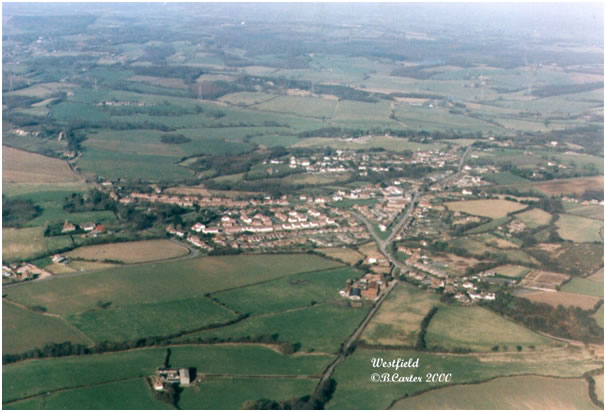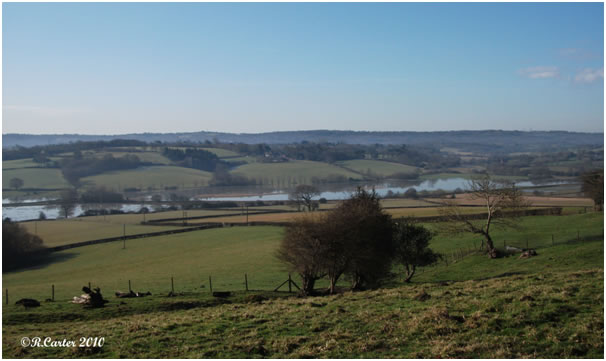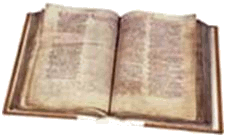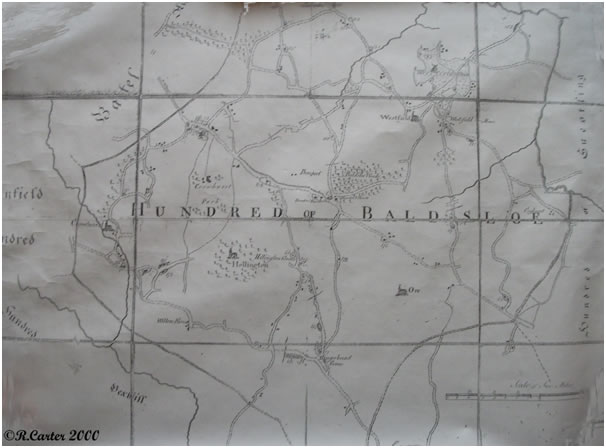The Parish of Westfield
 |
 |
 |
Set well within 1066 country on the A28 five miles from Hastings. In beautiful undulating countryside Westfield is a widespread  Parish at the present time accommodating 2750 people, a far cry from the 7 villagers and 1 cottager mentioned in the Domesday Book :
Parish at the present time accommodating 2750 people, a far cry from the 7 villagers and 1 cottager mentioned in the Domesday Book :

“Winstan held WESTFIELD before 1066; he could go where he would. Then and now it answered for 1 hide and 2 virgates. Land for 3 ploughs. Wibert holds from the Count of Eu. He has in lordship 1½ ploughs:
7 villagers and 1 cottager with 3 ploughs.
Value before 1066, 20s; later 70s; now 72s.”
As is seen the name was shown as “Westwelle”. With “well” originating from the Roman interpretation of ‘spring’ this would connect to the fact that many areas exist where natural springs would have been encountered during a period of much Roman occupation within this Parish. (Some do however believe it to be a scribal error).
 |
Within the RAPE OF HASTINGS given by William the Conqueror to the Count of Eu the HUNDRED OF BALDSLOW at the time of Domesday included Filsham, Hollinton, Croteslei, Westfelde, Crowhurst and Wilting. The Courts for the Hundred were held at the Hundred House the present Harrow Inn. |
|
By the middle of the 13th Century the Vill of Ore and the Tithing of Legh or Inlegh make their appearance and from 1296 onwards the Hundred was divided for the purpose of taxation into Ore, Inlegh (Westfield), Wilting and Crowhurst. Around an area of open downland three manors, Westfield, Lankhurst and Crowham adjoined each other. WESTFIELD being the dominant manor once owned by the Monks of Battle Abbey is from where the present name derives. |
